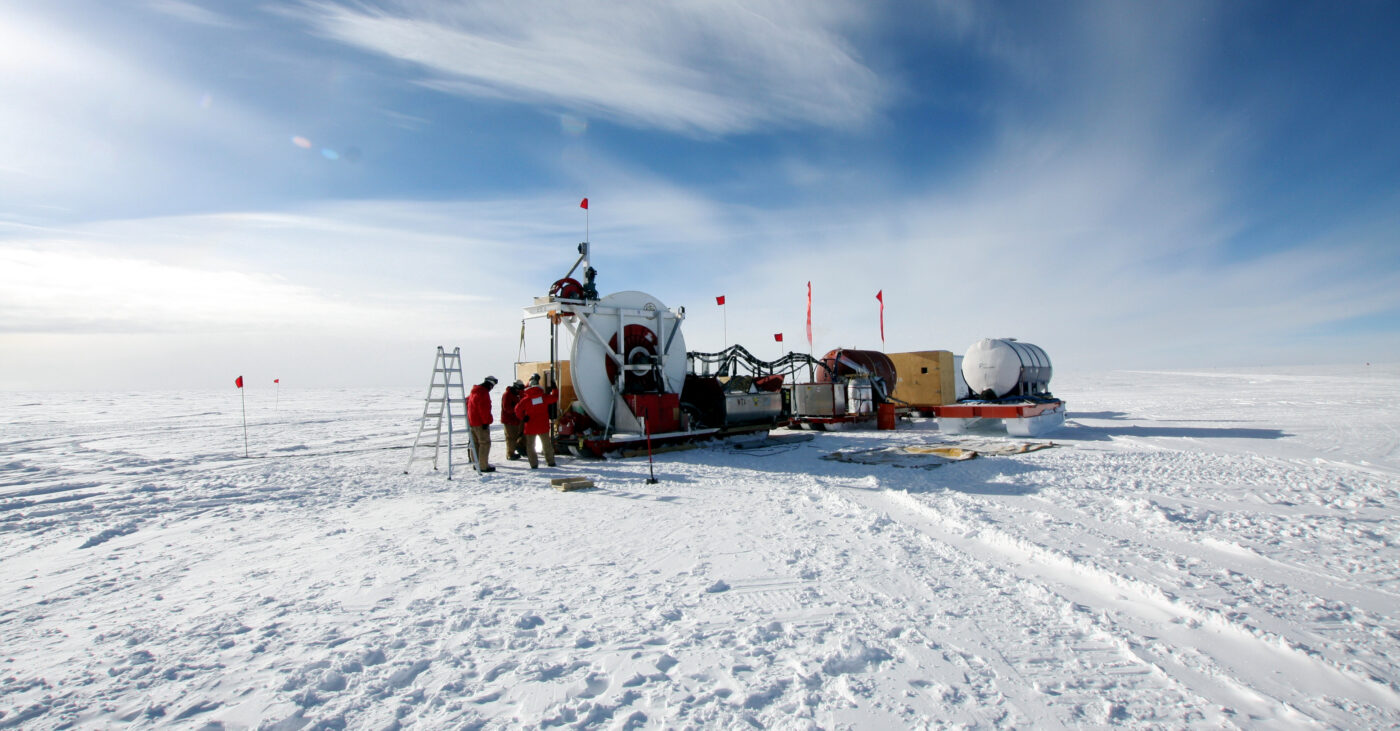projects
ARA

Overview
The Askaryan Radio Array (ARA) is a radio detector array operating at the South Pole, designed for the detection of ultra-high-energy cosmic neutrinos using the emission of radio pulses produced by interactions in the Antarctic ice. This instrument is an R&D device geared toward an IceCube-Gen2 radio detector. The goal is to detect the cosmogenic neutrino flux at energies above 1017 eV.
Research Topics
-
Detection of ultra-high-energy cosmic neutrinos
Senior Personnel
WIPAC Contributions
ARA collaborators at UW–Madison are primarily responsible for the integration, testing, drilling, and installation of the ARA instrumentation at the South Pole.
The scientific team is working on detector simulations, including neutrino interaction and photon propagation, data analysis, software development, event reconstruction tools, triggering studies, and detector operations.
Select Publications
Performance of two Askaryan Radio Array stations and first results in the search for ultra-high energy neutrinos
ARA Collaboration: P. Allison et al
(Journal Article) Phys. Rev. D93 (2016) 8, 082003; e-print archive arXiv: 1507.08991[astro-ph.HE]
journals.aps.org | arxiv.org
First Constraints on the Ultra-High Energy Neutrino Flux from a Prototype Station of the Askaryan Radio Array
ARA Collaboration: P. Allison et al
(Journal Article) e-print: arXiv:1404.5285v2 [astro-ph.HE]
arxiv.org
Design and Initial Performance of the Askaryan Radio Array Protoype EeV Neutrino Detector at the South Pole
ARA Collaboration: P. Allison et al
(Journal Article) Astropart. Phys. 35 (2012) 457-477; e-print: arXiv:1105.2854 [astro-ph.IM]
arxiv.org
